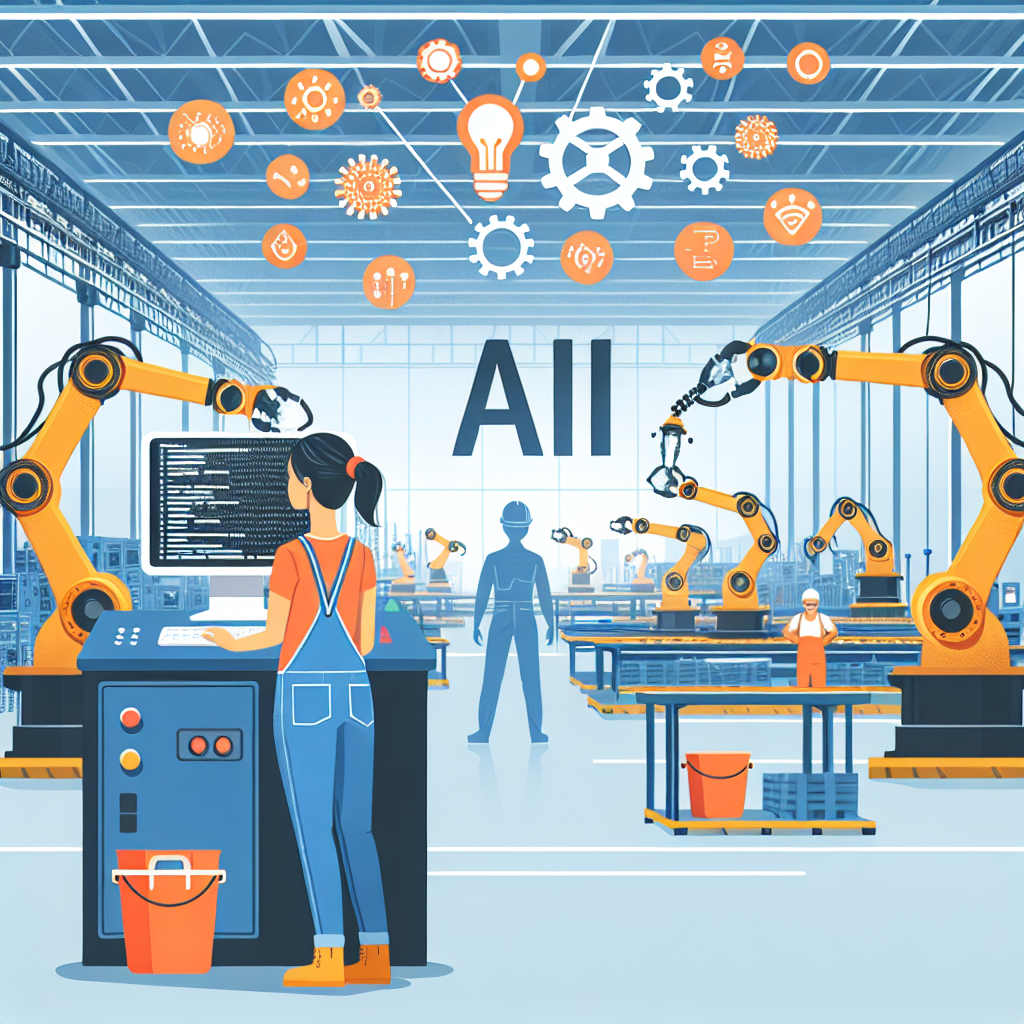Artificial Intelligence (AI) is revolutionizing the manufacturing industry by improving worker safety in ways that were previously unimaginable. From predictive maintenance to real-time monitoring, AI is transforming the way manufacturers keep their employees safe on the job. In this article, we will explore how AI is being used to enhance worker safety in manufacturing and address some common questions about the technology.
One of the key ways AI is improving worker safety in manufacturing is through predictive maintenance. By using AI algorithms to analyze data from sensors and machines, manufacturers can predict when equipment is likely to fail and schedule maintenance before a breakdown occurs. This not only reduces downtime and increases productivity, but also minimizes the risk of accidents that can occur when machines malfunction unexpectedly.
For example, a manufacturing plant that produces automotive parts may use AI to monitor the condition of its machinery in real-time. If the AI detects a potential issue with a machine, it can alert maintenance staff to investigate and address the problem before it escalates. This proactive approach to maintenance not only keeps workers safe, but also saves the company money by preventing costly repairs and downtime.
Another way AI is enhancing worker safety in manufacturing is through real-time monitoring of employee behavior. By using computer vision technology and sensors, manufacturers can track the movements of workers on the factory floor and identify potentially hazardous situations. For example, AI can alert supervisors if a worker is not wearing the proper safety equipment or if they are in a restricted area where they should not be.
In addition, AI can analyze data from wearable devices worn by workers to monitor their vital signs and detect signs of fatigue or stress. This information can be used to adjust work schedules or provide additional training to prevent accidents caused by human error. By using AI to monitor worker behavior in real-time, manufacturers can proactively address safety concerns and prevent accidents before they happen.
Furthermore, AI-powered robots are being used to perform dangerous tasks in manufacturing environments, reducing the risk of injury to human workers. These robots are equipped with sensors and cameras that allow them to navigate the factory floor and perform complex tasks with precision. By delegating hazardous tasks to robots, manufacturers can keep their employees safe while increasing efficiency and productivity.
In addition to predictive maintenance, real-time monitoring, and AI-powered robots, manufacturers are also using AI to analyze data from past accidents and near misses to identify patterns and prevent future incidents. By applying machine learning algorithms to historical data, manufacturers can identify trends and develop strategies to address safety risks before they escalate.
Overall, AI is transforming worker safety in manufacturing by providing real-time insights, predicting potential hazards, and automating dangerous tasks. By leveraging the power of AI, manufacturers can create safer work environments for their employees and improve overall productivity.
FAQs:
Q: How does AI improve worker safety in manufacturing?
A: AI improves worker safety in manufacturing by providing real-time monitoring of equipment and employee behavior, predicting potential hazards through predictive maintenance, automating dangerous tasks with AI-powered robots, and analyzing data to identify patterns and prevent future accidents.
Q: Can AI prevent all accidents in manufacturing?
A: While AI can significantly reduce the risk of accidents in manufacturing, it cannot prevent all incidents. Human error, unforeseen circumstances, and other factors can still contribute to accidents in the workplace. However, AI can help minimize these risks by providing real-time insights and predictive analytics.
Q: How can manufacturers implement AI for worker safety?
A: Manufacturers can implement AI for worker safety by investing in sensors, cameras, and other devices that collect data from the factory floor. This data can then be analyzed using AI algorithms to identify potential hazards, predict equipment failures, and monitor employee behavior in real-time.
Q: What are the benefits of using AI for worker safety in manufacturing?
A: The benefits of using AI for worker safety in manufacturing include reduced downtime, increased productivity, lower maintenance costs, improved employee morale, and a safer work environment overall. By leveraging the power of AI, manufacturers can enhance worker safety and achieve greater efficiency in their operations.
In conclusion, AI is revolutionizing worker safety in manufacturing by providing real-time insights, predicting potential hazards, automating dangerous tasks, and analyzing data to prevent accidents. By harnessing the power of AI, manufacturers can create safer work environments for their employees and improve overall productivity. With continued advancements in AI technology, the future of worker safety in manufacturing looks brighter than ever.

